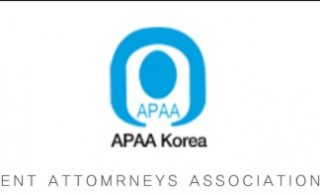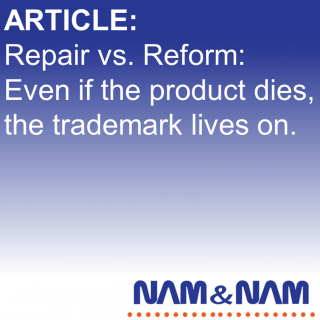Designs troubled by trademarks
To achieve registration a design must satisfy several prerequisite requirements, such as novelty and creativity. Novelty signifies that the design, before application, must not have been included in publications or catalogues, publicized through sales or exhibition, or exposed in any other manner such that somebody could identify it. Further, creativeness signifies that a person with ordinary skill in the art could not easily create a given design based on pre-existing internationally or domestically known designs, well-known shapes, patterns, or colors, or any combination thereof.
Interplay between designs and trademarks
However, even if the aforementioned requirements are satisfied, designs which are liable to create confusion over articles connected with another person’s business cannot be registered and shall be invalidated if granted. Typical examples include designs which use another person’s well-known trademarks, service marks, collective marks, or business emblems (including 3D trademarks).
Here, a question arises as to whether a likelihood of confusion requires that there be similarity between the design article and the designated goods of the trademark.
Likelihood of confusion
Regarding the above question, the court recently answered that similarity between the design article and the designated goods of the trademark is not required in finding a likelihood of confusion. (Patent High Court, 2020heo6255, November 18, 2021)
The registered design in question is shown as below and was for a “handbag accessory”.
Fig. 1
Fig. 2
Fig. 3
(original 3D file)
(front view)
(Side view)
This case examines whether or not the plaintiff’s registered design possesses the possibility of confusion with the defendant’s products related to the trademarks as below, and if so, whether the plaintiff’s registered design should be invalidated.
Pre-existing Trademark 1
Pre-existing Trademark 2
(Classes 6,9,14,18,20,24)
(Classes 14,25,26)
Well-known or remarkably famous trademarks are protected, regardless of whether they are registered under the Trademark Act, by restricting the registration of any identical or similar marks. An application for the registration of a similar mark filed by a person other than the owner of such a well-known/famous trademark will be rejected; and, if registration is erroneously granted, the mark will be subject to invalidation. Registration of a similar mark may also be rejected even if the goods of the trademark application are not identical or similar to those of the well-known/famous trademark due to the possibility of misleading the consumers about the origin of the goods as well as anti-competitive practices.
Given the global brand recognition of Chanel, whether or not the defendant’s pre-existing trademarks met the legal standards for being ‘famous’ was not in question. Rather, the key issue was with respect to whether or not the plaintiff’s registered design was likely to cause confusion over articles connected with the defendant’s business.
The court ruled that there indeed was a possibility of confusion. The following outlines the court’s reasoning:
The registered design is comprised of two overlapping circular rings similar to the English letter “O”, and is closed overall, while the pre-existing trademarks consist of two “C”s overlapping in different directions, with both sides open. The registered design shows five thin “O” shaped rings that are connected to form a single ring, while the pre-existing trademark is in the shape of a thick, black English letter “C”. The design differs from the trademark in that the two disk rings are combined in a ring shape to form a three-dimensional effect, while the trademark is flat and two-dimensional.
A key similarity between the registered design in question and the pre-existing trademarks involves an intersection and overlapping of two characters featuring the same thickness while both converge at the same angle.
The area that intersects and combines symmetrically is the dominant aesthetic feature of the trademarks and designs as well. Despite the above-mentioned differences therebetween, they are too minor to offset the overwhelming similarity in their dominant aesthetic features. Therefore, overall, the two are similar enough to reasonably conclude that it may create confusion over articles connected with the trademark owner’s business.
It is important to note that plaintiff’s argument that “the designated products on which the design is to be applied differ in purpose and function from the defendant’s products, and are therefore unlikely to cause confusion”, was rejected by the court. According to the court, it is because as long as there is a possibility of confusion between the registered design and the articles connected with another person’s business, the products of the registered design and the products of the pre-existing trademark are not required to be the same or similar for the purposes of invalidating the registered design. However, there were two important additional factors that the court considered in reaching its decision. First, the product of the plaintiff, in this case a handbag, was comprised of zippers, straps, and materials that were used in the same or similar fashion to those of the defendants’ products.
Second, the plaintiff’s design was separately applied for and registered as a trademark for the same design in class 18, which pertains to leather and leather imitation products, which includes handbags.
Notes
Well-known trademarks are legally protected under both the Trademark Act and the Design Protection Act. According to the Trademark Act, any trademark likely to cause confusion with the goods or business of another person that is remarkably recognized by consumers is ineligible for trademark registration. Similarly, the Design Protection Act states that the application of a design likely to cause confusion with an article associated with another person’s business may be rejected if it is found to be to identical or similar to a pre-existing trademark. Here, as long as there is a possibility of confusion over articles connected with another person’s business, the products of the design and the goods of the trademark are not required to be the same or similar for the purposes of rejecting a design application or invalidating a registered design.
When considering filing a design application, it is important to do a similarity search not only for prior designs but also pre-existing trademarks which are well known or famous in the market.
Written by Ben Yuu (Managing Partner)




